
Moshi is a municipality and the capital of Kilimanjaro region in the north eastern Tanzania. As of 2017, the municipality has an estimated population of 201,150 and a population density of 3,409 persons per km2. In the last official census of 2022, the municipality had a population of 221,733. The municipality is situated on the lower slopes of Mount Kilimanjaro, a dormant volcano that is the highest mountain in Africa. The name Moshi has been reported to refer to the smoke that emanates from the nearby mountain. The municipality covers about 59 square kilometres (23 sq mi) and is the smallest municipality in Tanzania by area.
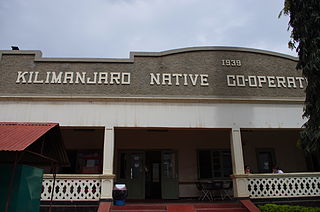
Kilimanjaro Native Co-operative Union (KNCU) is a cooperative federation in Tanzania and the oldest cooperative in the country, founded in 1930 by Charles Dundas. KNCU is owned by the farmers of the 90 primary cooperative societies which buy coffee from the farmers on Kilimanjaro. Offices for the cooperative are located in Moshi.
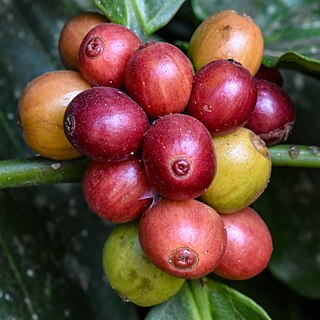
Coffea canephora is a species of coffee plant that has its origins in central and western sub-Saharan Africa. It is a species of flowering plant in the family Rubiaceae. Though widely known as Coffea robusta, the plant is scientifically identified as Coffea canephora, which has two main varieties, robusta and nganda.
Coffee production is a significant contributor to the economy of Kenya. The industry is noted for its cooperative system of production, processing, milling, marketing, and auction system. About 70% of Kenyan coffee is produced in small farms that control about 75% of the land under production. It was estimated in 2012 that there were about 150,000 coffee farmers in Kenya. Other sources suggest that 6 million Kenyans are employed directly or indirectly in the coffee industry.
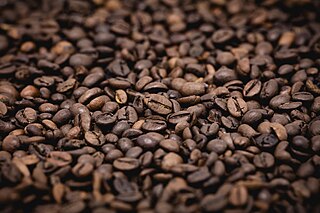
Coffee is a popular beverage and an important commodity. Tens of millions of small producers in developing countries make their living growing coffee. Over 2.25 billion cups of coffee are consumed in the world daily. Over 90 percent of coffee production takes place in developing countries — mainly South America — while consumption happens primarily in industrialized economies. There are 25 million small producers who rely on coffee for a living worldwide. In Brazil, where almost a third of the world's coffee is produced, over five million people are employed in the cultivation and harvesting of over three billion coffee plants; it is a more labor-intensive culture than alternative cultures of the same regions, such as sugar cane or cattle, as its cultivation is not automated, requiring frequent human attention.
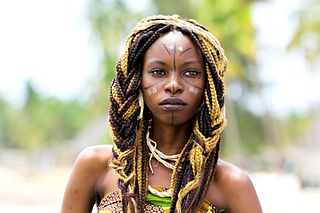
The Haya are a Bantu ethnic group based in Kagera Region, northwestern Tanzania, on the western side of Lake Victoria. With over one million people, it is estimated the Haya make up approximately 4% of the population of Tanzania. Historically, the Haya have had a complex kingship-based political system. Agriculture, particularly banana farming, is central to Haya economic life. They are credited with the independent development of carbon steel dating to 2000 years ago using pre-heating techniques.
The Oromia Coffee Farmers’ Cooperative Union (OCFCU) is a smallholder farmer-owned cooperative union based in the Oromia region of Ethiopia. The aforementioned region is characterized by its unique native vegetation and tropical climate conducive to coffee bean growth. OCFCU is a democratic, member-owned business operating under the principles of the International Cooperative Alliance and Fair trade, and the Union plays a central role in the Ethiopian coffee marketing chain. The members of OCFCU grow, process, and supply organic Arabica coffee for export.

Indonesia was the fourth-largest producer of coffee in the world in 2014. Coffee cultivation in Indonesia began in the late 1600s and early 1700s, in the early Dutch colonial period, and has played an important part in the growth of the country. Indonesia is geographically and climatologically well-suited for coffee plantations, near the equator and with numerous interior mountainous regions on its main islands, creating well-suited microclimates for the growth and production of coffee.

Coffee production in India is dominated in the hill tracts of South Indian states, with Karnataka accounting for 71%, followed by Kerala with 21% and Tamil Nadu. Indian coffee is said to be the finest coffee grown in the shade rather than direct sunlight anywhere in the world. There are about 250,000 coffee growers in the country; 98% of them are small growers. As of 2009, Indian coffee made up just 4.5% of the global production, being the 7th largest producer of coffee. Almost 80% of Indian coffee is exported; 70% is bound for Germany, Russia, Spain, Belgium, Libya, Poland, Jordan, Malaysia, U.S.A, Slovenia and Austria. Italy accounts for 20.37% of the exports. Most of the export is shipped through the Suez Canal.

Coffee is an important agricultural product in the Philippines, and is one of the Philippines' most important export products aside from being in high demand in the country's local consumer market.
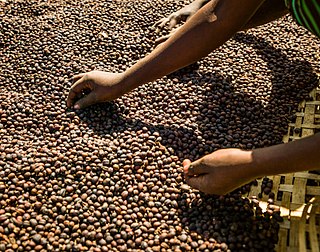
Coffee production in Ethiopia is a longstanding tradition which dates back dozens of centuries. Ethiopia is where Coffea arabica, the coffee plant, originates. The plant is now grown in various parts of the world; Ethiopia itself accounts for around 17% of the global coffee market. Coffee is important to the economy of Ethiopia; around 30-35% of foreign income comes from coffee, with an estimated 15 million of the population relying on some aspect of coffee production for their livelihood. In 2013, coffee exports brought in $300 million, equivalent to 24% of that year's total exports.

Laos produces two main types of coffee: Robusta and Arabica. Robusta is mainly used for regular coffee as well as a typical coffee drink in Laos where it is sweetened with condensed milk. The latter, Arabica, is of a higher quality due to its mild taste, and it is used for espresso. For the 20,000 tons of coffee that Laos produces a year, 5,000 tons are Arabica beans and 15,000 tons are Robusta.

Coffee is Uganda's top-earning export crop. In 1989 Uganda's coffee production capacity exceeded its quota of 2.3 million bags, but export volumes were still diminished by economic and security problems, and large amounts of coffee beans were still being smuggled out of Uganda for sale in neighbouring countries. Uganda is one of the few countries in the world with indigenous coffee, with Robusta coffee growing wild around Lake Victoria.
Coffee production in Panama was occurring in the Boquete Valley by the early 20th century, although coffee was growing wild all over the Pacific coast region of Panama by this time, when production did not match domestic consumption. The International Coffee Organization (ICO) has grouped mild arabica as the variety of coffee that is grown in Panama. The best quality of coffee in Panama is grown in Boquete. In the Coffee Review of 2008, two Panamanian coffees have received higher rating and fetched record prices than the coffee from Costa Rica. This is mainly due to the unprecedented success of the Geisha varietal. This varietal originated from and arrived via Tanzania and Costa Rica in the 1960s in Panama. But only in 2004, its outstanding taste profile was recognized. In 2019 one pound of Panama Geisha beans fetched $1,029 in an auction.

Coffee production is very important for the economy of Cameroon The crop is grown extensively in the country, with robusta more prevalent in the coastal areas and arabica more widespread in the western highlands. The two varieties of arabica cultivated are Java and Jamaïca of which only Java is resistant to pests such as coffee berry disease and rust. In 2014, Cameroon was ranked the 31st largest producer of coffee in world.

Thailand is one of the top 25 coffee producers in the world as of 2014, but its status as a coffee origin has not been widely known. Thailand traditionally produced mainly Robusta for industrial use, but the country has quickly become an exciting emerging origin for specialty Arabica and fine Robusta coffees. The origin is unique in that it exports very little coffee and most of the consumption remains in the country. There is a booming specialty coffee ecosystem where farmers, roasters, cafes and consumers symbiotically co-exist. It is often seen as an example of a working coffee ecosystem for an origin where coffee produced is sustainable from both economic and environmental perspectives.

Agriculture is the main part of Tanzania's economy. As of 2016, Tanzania had over 44 million hectares of arable land with only 33 percent of this amount in cultivation. Almost 70 percent of the rich population live in rural areas, and almost all of them are involved in the farming sector. Land is a vital asset in ensuring food security, and among the nine main food crops in Tanzania are maize, sorghum, millet, rice, wheat, beans, cassava, potatoes, and bananas. The agricultural industry makes a large contribution to the country's foreign exchange earnings, with more than US$1 billion in earnings from cash crop exports.
Modern cultivation of coffee in China began in 1988. In 2016 and 2017, China was among the top 20 worldwide producers of coffee. Ninety-eight per cent of the coffee grown in China comes from Yunnan province.
Benguet coffee, also known as Benguet arabica, is a single-origin coffee varietal grown in the Cordillera highlands of the northern Philippines since the 19th century. It belongs to the species Coffea arabica, of the Typica variety. It is one of the main crops of farmers in the province of Benguet, which has a climate highly suitable for arabica cultivation. Benguet coffee is listed in the Ark of Taste international catalogue of endangered heritage foods by the Slow Food movement.





















